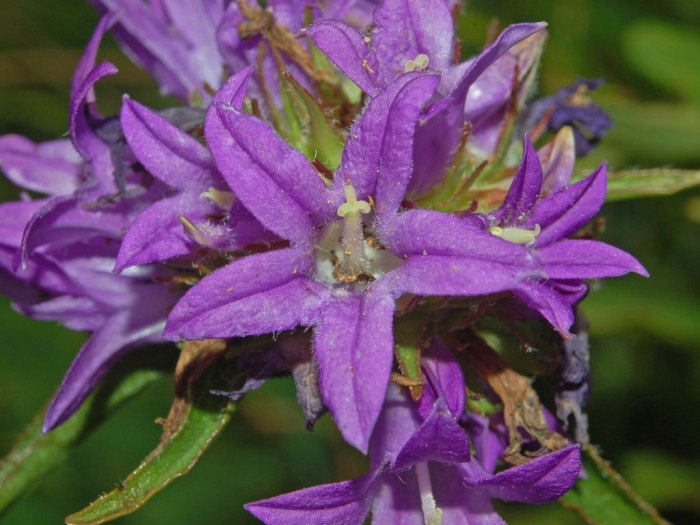Dane’s Blood
(Campanula glomerata)
Dane’s Blood (Campanula glomerata)
/
/

Hectonichus
CC BY-SA 3.0























































Estimated Native Range
Summary
Dane’s Blood is valued for its vibrant flower clusters and its ability to adapt to a range of garden conditions. It is often used in border plantings, rock gardens, and as ground cover. The plant thrives in full sun to part shade and prefers medium amounts of water and well-drained soils. It is relatively low maintenance, but deadheading can encourage a longer blooming period. Popular cultivars include ’Joan Elliott’ with large violet flowers, the white-flowered ’Schneekrone’, the vigorous ’Superba’ with rich blue flowers, and the pale purple ’Caroline’, both of which have won the Royal Horticultural Society’s Award of Garden Merit. However, gardeners should be aware that Campanula glomerata can be potentially invasive outside its native range, and it is advisable to check local regulations before planting.CC BY-SA 4.0
Plant Description
- Plant Type: Herb
- Height: 0.5-0.8 feet
- Width: 1-2 feet
- Growth Rate: Moderate
- Flower Color: Purple
- Flowering Season: Summer, Spring
- Leaf Retention: Deciduous
Growth Requirements
- Sun: Full Sun, Part Shade
- Water: Medium
- Drainage: Medium, Fast
Common Uses
Bank Stabilization, Bee Garden, Bird Garden, Border Plant, Butterfly Garden, Deer Resistant, Edible*Disclaimer: Easyscape's listed plant edibility is for informational use. Always verify the safety and proper identification of any plant before consumption., Groundcover, Hummingbird Garden, Low Maintenance, Potted Plant, Rabbit Resistant, Rock Garden, Salt Tolerant, Showy Flowers, Street Planting
Natural Habitat
Native to meadows, grasslands, and light woodlands across parts of Asia and Europe
Other Names
Common Names: Dane’s-Blood, Clustered Bellflower, Nøgleblomstret Klokke, Knäuel-Glockenblume, Büschel-Glockenblume, Knäuelglockenblume, Peurankello, Campanule Agglomérée, Toppklokke, Kluwenklokje
Scientific Names: , Campanula glomerata, Campanula farinosa, Syncodon glomeratum, Weitenwebera glomerata,
GBIF Accepted Name: Campanula glomerata L.